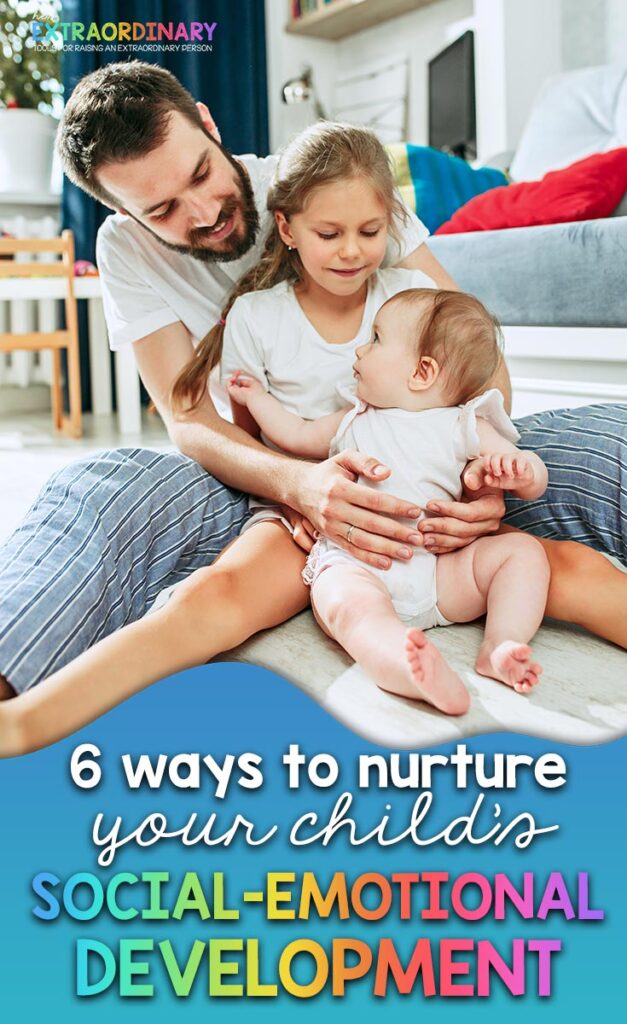Social-Emotional Learning Begins at Home – Here’s How to Do It
What’s inside this article: An overview of what social-emotional learning is, which skills it encompasses, why it’s so important for child development, and tips for parents to provide SEL in the home.
Disclaimer: this post contains affiliate links.
What is Social-Emotional Learning
Social-Emotional learning referred to as SEL for short, is the process of learning and applying the skills necessary to manage emotions, have self-awareness and social awareness, and show empathy.
SEL is important for children to develop and maintain positive relationships, decision-making skills, develop perspective-taking skills, and build emotional intelligence.
Kids are born with many intense emotions, but they aren’t born with the skills to respond to, express, or cope with these emotions.
This is why engaging in social-emotional learning at home is so important.
Components of Social-Emotional Learning
There are 5 key components to social-emotional learning. The skills developed under each component builds upon and intertwines with others.
Here’s a short look at each of those components. (Source)
SELF-AWARENESS
Recognizing your own emotions, thoughts, and values. Self-awareness also includes understanding how your thoughts and emotions effect your behavior.
- Identifying emotions
- Accurate self-perception
- Recognizing strengths
- Self-confidence
- Self-efficacy (having a ‘growth mindset’)
SELF-MANAGEMENT
Successfully regulating your emotions and behaviors in different situations. This includes controlling impulses, managing stress, motivating yourself, setting and working toward goals.
- Impulse control
- Stress management
- Self-discipline
- Self-motivation
- Goal-setting
- Organizational skills
DECISION MAKING
The ability to make positive choices about your own behavior and social interactions based on ethics, social norms, and the consideration for yourself and others.
- Identifying problems
- Analyzing situations
- Solving problems
- Evaluating
- Reflecting
- Ethical responsibility
RELATIONSHIP SKILLS
Establishing and maintaining healthy relationships with others including diverse individuals and groups.
This includes the ability to communicate, listen to others, manage conflict, seek and offer help as needed, as well as other important social skills.
- Communication
- Social engagement
- Relationship building
- Team work
SOCIAL AWARENESS
Taking the perspective of, and emphasizing with, others, including those with diverse backgrounds.
- Perspective-taking
- Empathy
- Appreciating others
- Respect for others
Developing Social-Emotional Skills
It’s important to understand that the development of social-emotional skill, although it begins at a young age, is a lifelong process where we are constantly learning about new ways to relate to, and interact with others.
These skills take place inside the prefrontal cortex. This region of the brain is not even fully developed until the mid to late twenties.
It would be unrealistic to expect a toddler to set a goal and plan the steps involved in meeting that goal, or to have perfect impulse control… or to perfect anything on this list.
We are always learning and growing.
However, you can begin teaching these skills literally from birth, starting with the way you respond to your child’s needs, helping them identify emotions, offering a vocabulary to name their feelings, and teaching calming strategies.
DID YOU KNOW?
According to a CASEL 2011 meta-analysis of 213 studies involving more than 270,000 students, those who participated in evidence-based SEL programs showed an 11 percent gain in academic achievement compared to students who did not participate in SEL programs.
Social-Emotional Learning at Home & in Early Childhood
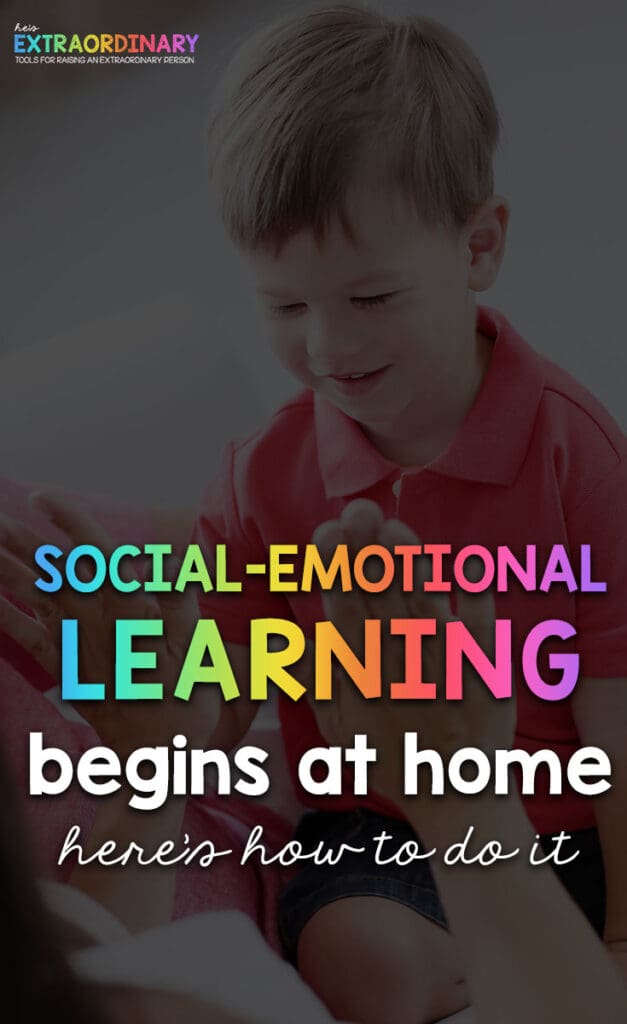
I’m just going to cover some very easy methods that, as a parent, you can implement in your home, to help your child’s social-emotional development.
Building this strong foundation of skills will help your child, as they grow up, to develop strong emotional intelligence, as well as some other important skills for success.
Emotion Coaching
Emotion coaching is the process of guiding your child through intense emotions by validating, relating, naming the emotion and holding boundaries.
Children need to learn that emotions are normal, they’re important, and they need to be followed through (not suppressed or avoided).
This method was developed by Dr. Adele Lafrance Robinson and Dr Joanne Dolhanty. Learn about using emotion coaching in more detail here.
The steps to emotion coaching:
It’s important to do these steps in order. It can feel awkward at first but with practice it begins to flow more naturally.
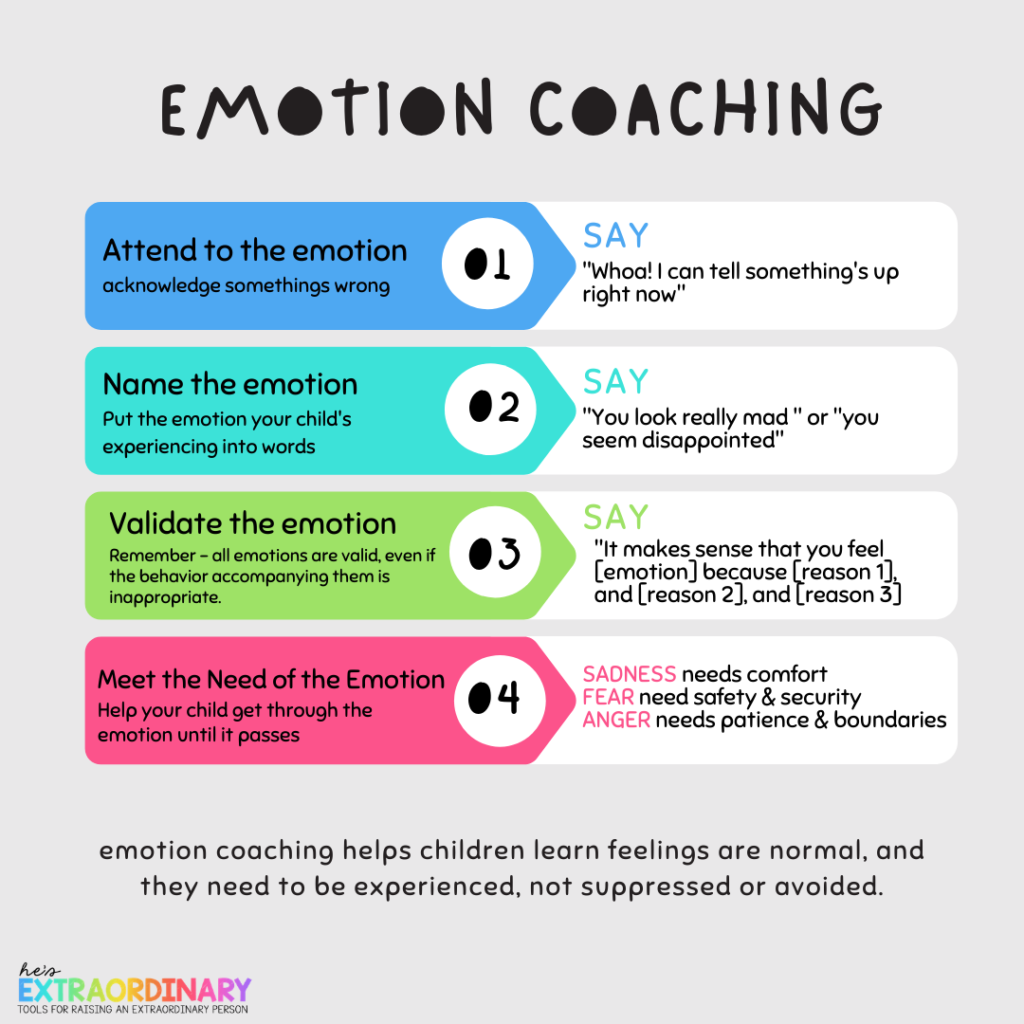
Time-Ins
A time-in involves guiding your child to a safe space where you can use co-regulation strategies and emotion coaching to help them calm their bodies and process their emotions.
This helps children develop emotional intelligence, making them more in tune with their strong emotions.
It’s helpful to set up a calming corner in your home that contains all the tools you need for helping your child cope with their emotions.
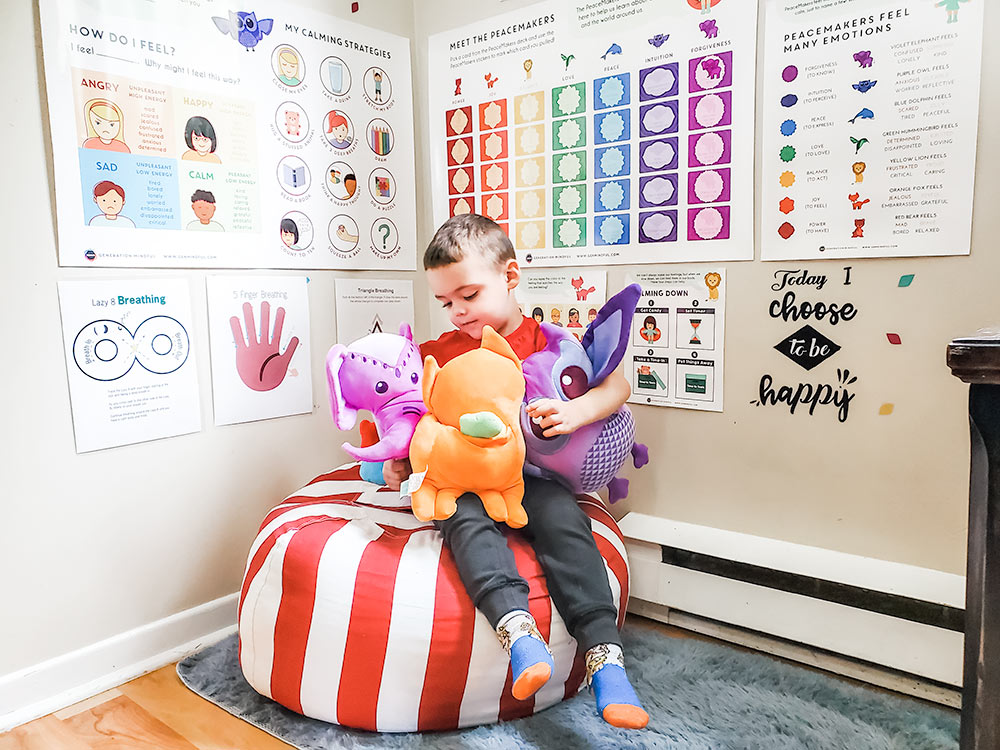
Model Healthy Emotional Regulation
Keep yourself well-regulated. It’s important to be aware of your own emotions, body language, tone of voice, behavior etc.
You need to stay calm and model healthy ways to cope in stressful situations and while addressing your child’s behavior. If this is hard for you: read these tips.
Also openly share you feelings with your child throughout the day – both positive and negative emotions. This continues to help children develop a vocabulary around emotions.
Say things like “I’m feeling disappointed, my coffee is cold”, “I tripped in the store this morning, it made me feel embarrassed, but I took a deep breath and kept shopping”
The Zones of Regulation
The Zones of Regulation is a complete social-emotional learning curriculum, created to teach children self-regulation and emotional control.
It’s often taught in school or therapy settings but the curriculum is appropriate for parents to teach at home, too. Read more about it here.
You can find lots of different Zones activities for all ages here: 11 Zones of Regulation Activities and Printables
Julia Cook Books
Julia Cook is a children’s author whose published over 100 books that all have a social-emotional learning theme.
Her books teach children social-emotional skills by using fun stories and illustrations that are easy to understand and relate to. My own children are easily able to re-call strategies used by characters in the books and practice them at home with my guidance.
You can find my top 10 Julia Cook Books here.
She also does weekly read-along videos on her YouTube channel.
Big Life Journal
Big Life Journal tons of resources for all ages designed to encourage children to have a growth mindset, resilience, and strong social-emotional skills.
One product in particular that I recommend is their printable growth mindset kit. Check it out.
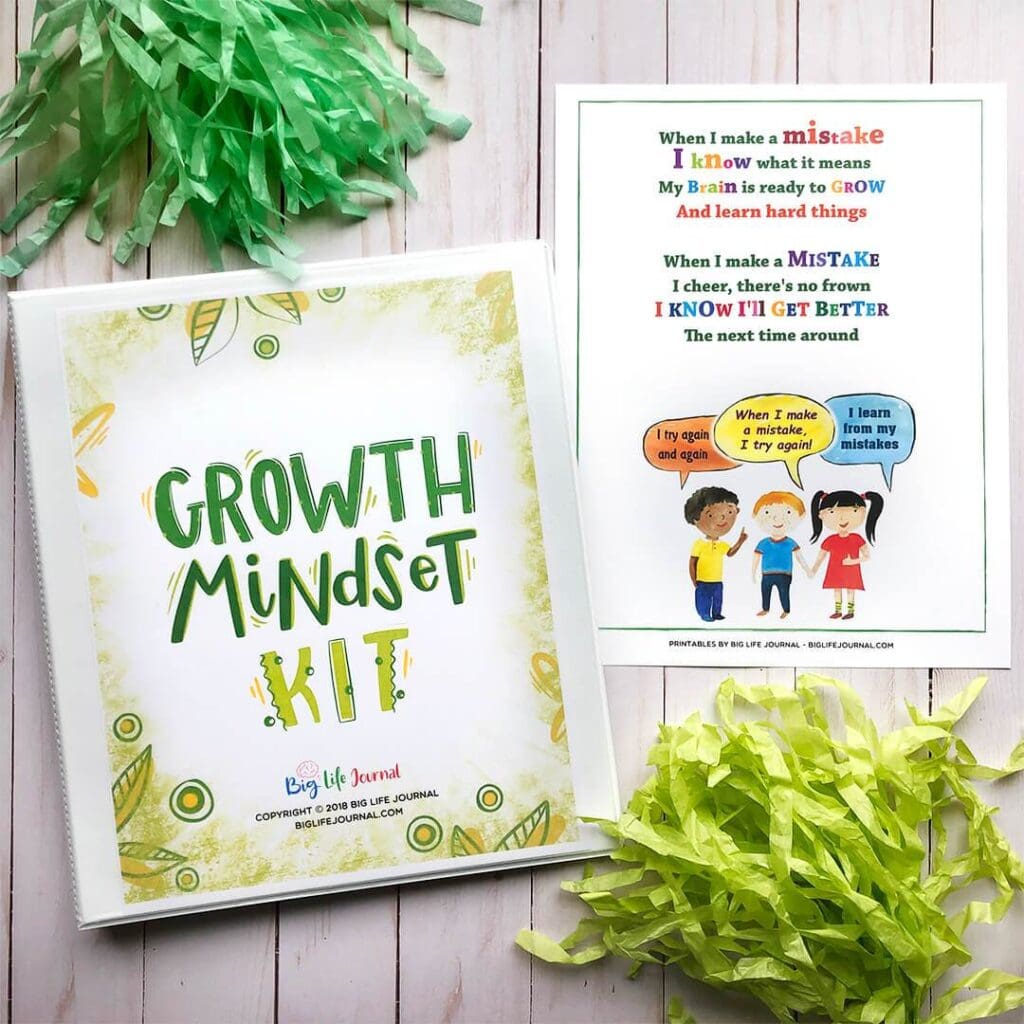

Lifetime Benefits to SEL
There are statistically significant associations between SEL skills in kindergarten and key outcomes for young adults years later.
Social-emotional learning decreased the likelihood of living in or being on a waiting list for public housing, receiving public assistance, having any involvement with police before adulthood, and ever spending time in a detention facility.
Read the 2015 national study published in the American Journal of Public Health.
